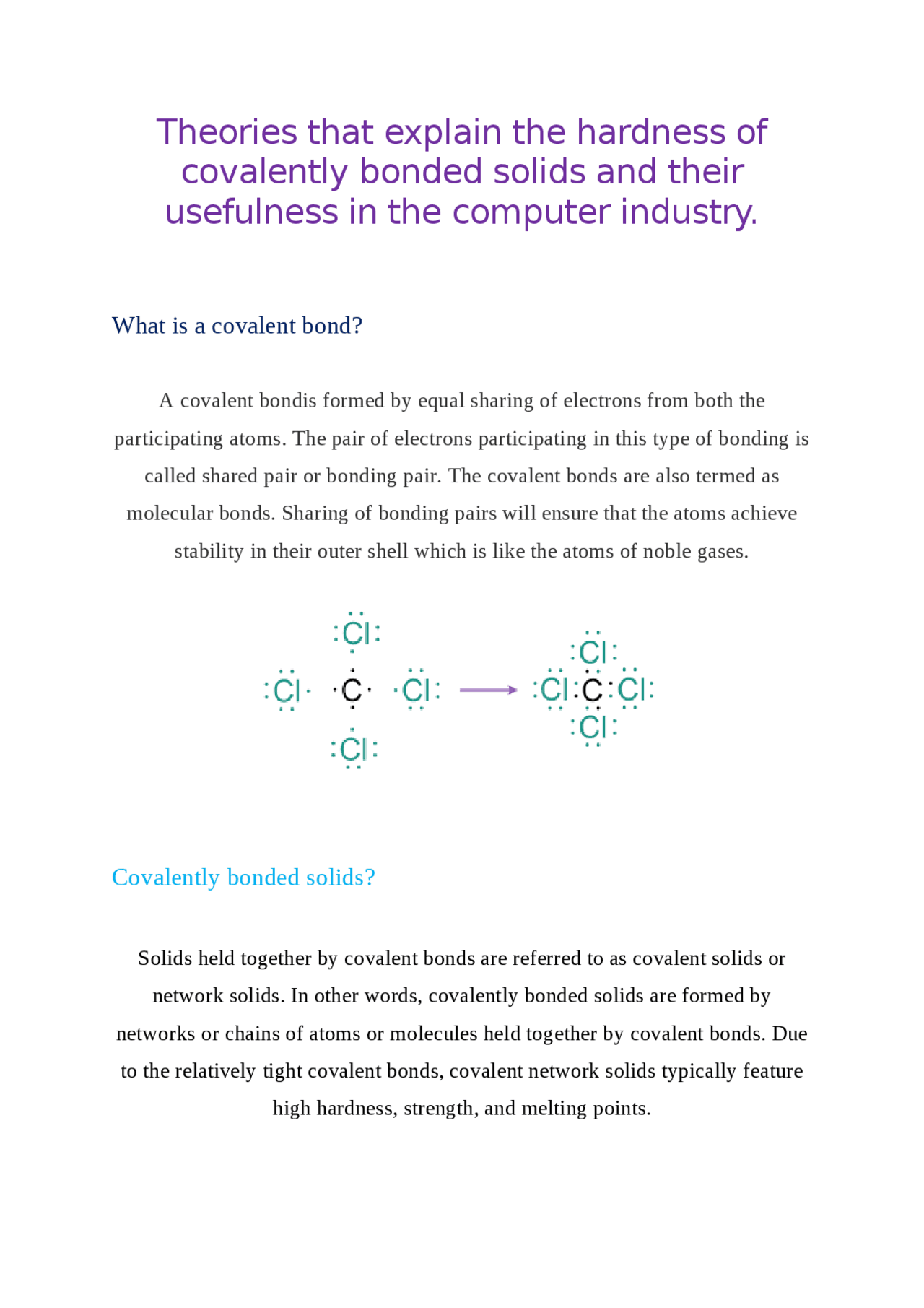Covalent bonds serve as foundational structures in the realm of chemistry, guiding the interactions between atoms and shaping the very materials that compose our world. At first glance, one might wonder whether these entities, often described in textbooks, are tangible manifestations of physical reality or merely theoretical constructs. This inquiry, revolving around the authenticity of covalent bonds, invites both scientific scrutiny and philosophical contemplation.
To address the core of this inquiry, it is imperative to delineate what covalent bonds are. A covalent bond forms when two atoms share pairs of electrons, resulting in a stable balance of attractive forces between the positively charged nuclei of the atoms and the negatively charged shared electrons. This interaction yields the formation of molecules— the essential building blocks of matter—including water, carbon dioxide, and numerous organic compounds vital for life.
Initially, the historical context of the term “covalent bond” is worthy of exploration. The concept emerged from the pioneering work of early chemists who aimed to provide clarity to the perplexing behaviors of atoms. Through meticulous experimentation and observations, scientists such as Gilbert Lewis and Linus Pauling crafted models that elucidated the mean of electron sharing. Their theoretical frameworks birthed a new understanding of atomic interactions, elevating the concept of covalent bonding from mere abstraction to a fundamental principle in chemistry.
However, one must consider the skepticism surrounding the tangible existence of covalent bonds. Critics often assert that these bonds are insufficiently observable given that they operate at the atomic and molecular scales, veiled from direct human perception. The unease surrounding the lack of empirical visibility can perpetuate debate over the “reality” of covalent bonds. Are they constructs of human ingenuity, created to simplify the complexities of atomic interaction? Or are they veritable components of the natural world, acting in accordance with unyielding physical laws?
Observational evidence reinforcing the existence of covalent bonds comes from various scientific methodologies and innovations in technology. Consider the advent of spectroscopy and microscopy, which have enabled scientists to observe molecular structures and their interactions. Through techniques such as X-ray crystallography and nuclear magnetic resonance spectroscopy, covalent bonds are elucidated as specific spatial arrangements of atoms within a substance, revealing unique molecular geometries and properties.
Furthermore, primary chemical reactions provide tangible evidence of covalent bonding. For example, the combustion of hydrocarbons—such as octane in gasoline—exemplifies covalent interactions as it yields water and carbon dioxide through bond breaking and formation. The energy change associated with these reactions can be quantified, demonstrating that the interactions between atoms are indeed real and have practical implications. The applications of this knowledge manifest in myriad ways, from the creation of synthetic materials to the development of pharmaceuticals.
Moreover, mathematical models and simulations serve as additional testimony to covalent bonds’ existence. Concepts such as molecular orbital theory and valence bond theory compute the behavior of electrons in covalent bonds through sophisticated algebraic formulations. These models, although abstract, produce predictions that align remarkably well with experimental data, enhancing our understanding of molecular interactions and reinforcing the notion that covalent bonds are integral to our comprehension of chemistry.
The appeal of covalent bonds extends beyond scientific inquiry; they resonate on a philosophical level as well. Consider the notion of collaboration inherent in the sharing of electrons. This reciprocity mirrors social constructs and the intricate interactions that define relationships in the natural world. The parallels drawn between atomic bonds and human connections evoke a profound fascination, prompting a deeper reflection on how fundamental principles of cooperation govern both the microcosm of atoms and the macrocosm of society.
Furthermore, the study of covalent bonds invites inquiry into the nature of existence itself. The interplay of attraction and repulsion among charged particles raises questions about stability and change within the cosmos. The ability of atoms to form strong covalent bonds underlies the persistence of complex structures in biological systems, highlighting the fragility and resilience of life. This duality underscores a broader theme: the existence of covalent bonds may well be emblematic of the delicate equilibrium that pervades all forms of matter.
In summary, covalent bonds embody a synthesis of theoretical construct and empirical reality, transcending the boundaries of mere abstraction. Their existence is corroborated by rigorous scientific investigation and technological innovation, as well as their pervasive influence within the natural world. While their intangibility might initially raise questions about their authenticity, the collective weight of evidence fortifies the argument for their reality. In light of this understanding, one can conclude that covalent bonds are not only real entities but also foundational principles that underpin the intricate tapestry of existence, inviting continued exploration and appreciation in the context of both science and philosophy.












